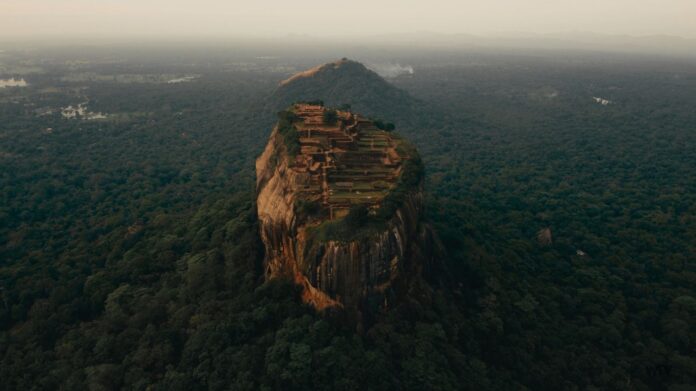The Majestic Rock Fortress of Sri Lanka
In the heart of the resplendent island of Sri Lanka stands a monument that transcends time itself—Sigiriya, the majestic rock fortress that beckons with its grandeur and mysteries.
What is Sigiriya?
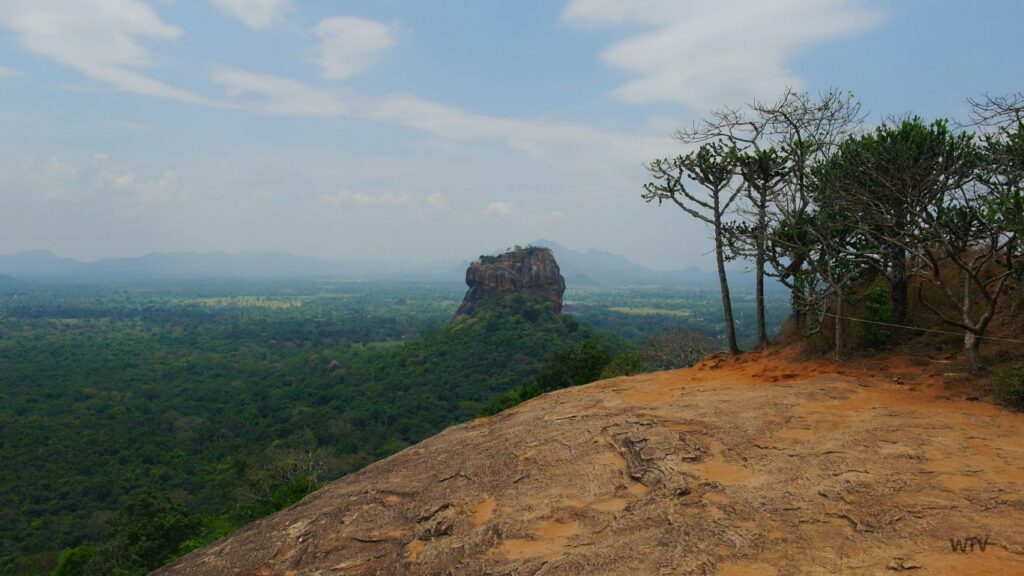
Sigiriya means Lion Rock. The origin of this was that the entrance gate of the rock fort was built in the form of a lion. Remnants of that image can still be seen from the giant lion’s feet at the base of the steps leading up to the palace. It was actually a palace because Sigiriya was used as the political center of Sri Lanka for about a decade and a half. This is perhaps the best preserved of the first-millennium planned cities in South and Southeast Asia. Sigiriya occupies a special place in the urban design of Asia for a number of reasons including its attractive surroundings, and creative design.
conservation status, etc. The urban form of Sigiriya is a plain with a number of central enclosures and was generally planned as a large rectangle enclosed by an outer moat (which has not yet been fully exposed). The landscape was designed around the towering Sigiri Rock. The geometrically rectangular city plan is km from east to west. About 3 km wide from north to south. Also about 1km.
Many people who come to Sigiriya believe that there are only constructions belonging to the reign of King Kasyapa (i.e. 5th century AD). But archeological evidence proves that there were several yugas before and after the reign of King Kasyapa for “Sigiriya”.
Exploring: What to Expect
Visitors can look forward to a challenging yet rewarding climb to the summit of the rock fortress. The climb takes approximately two hours and involves navigating a series of steep staircases, narrow passages, and rocky outcrops. However, the stunning views of the surrounding countryside, as well as the fascinating history and culture of the site, make the climb well worth the effort.
visitors can explore the ruins of the ancient palace and monastery, including the impressive lion gate, the throne room, and the royal swimming pool. The site is also home to several stunning frescoes, including the world-renowned Sigiriya maidens, which depict beautiful women in various poses and expressions.
History
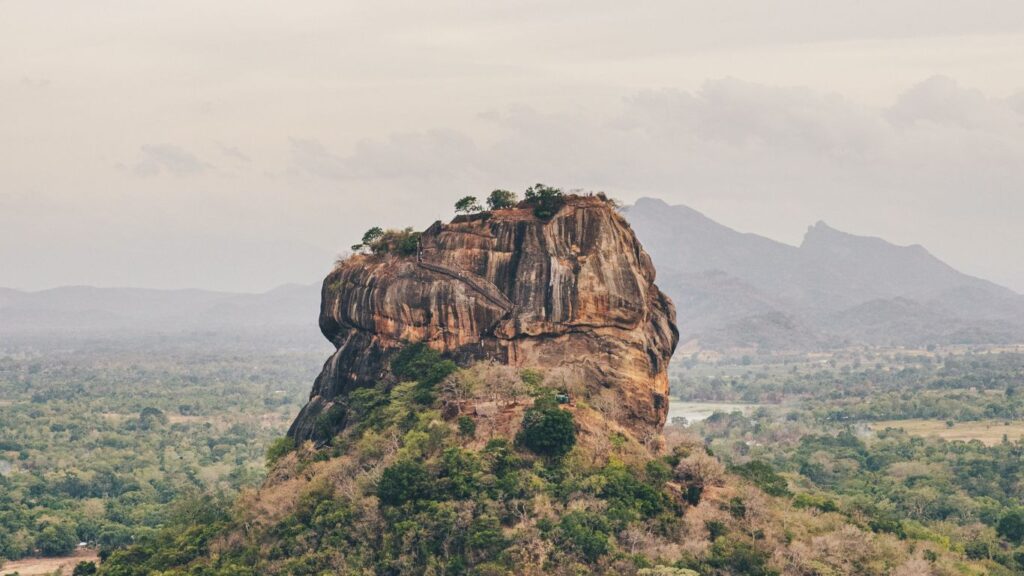
Sigiriya’s history dates back to the 5th century, during the reign of King Dhatusena. Legend has it that King Dhatusena had two sons, Mogallana and Kasyapa. When Mogallana, the rightful heir to the throne, defeated Dhatusena and ascended to the throne, Kasyapa fled to Sigiriya.
Kasyapa, who was known for his love of art and architecture, decided to build a new capital in the region. He chose the top of a massive rock, which rose 200 meters above the surrounding jungle, as the site for his new city.
Kasyapa spared no expense in building his new city. He constructed a massive palace, surrounded by beautiful gardens, pools, and water features. He also installed an extensive network of underground tunnels and water pipes, which provided a reliable source of water to the city’s inhabitants.
Despite its beauty and grandeur, Kasyapa’s reign was short-lived. His brother, Mogallana, eventually reclaimed the throne and marched on Sigiriya with an army. Kasyapa, realizing that he was outnumbered and outmatched, committed suicide by falling on his own sword.
After Kasyapa’s death, Sigiriya was abandoned and fell into disrepair. It was eventually rediscovered by British explorer Jonathan Forbes in 1831, who was astounded by its size and beauty. Today, Sigiriya is recognized as a UNESCO World Heritage Site and is one of Sri Lanka’s most popular tourist destinations.
Architecture
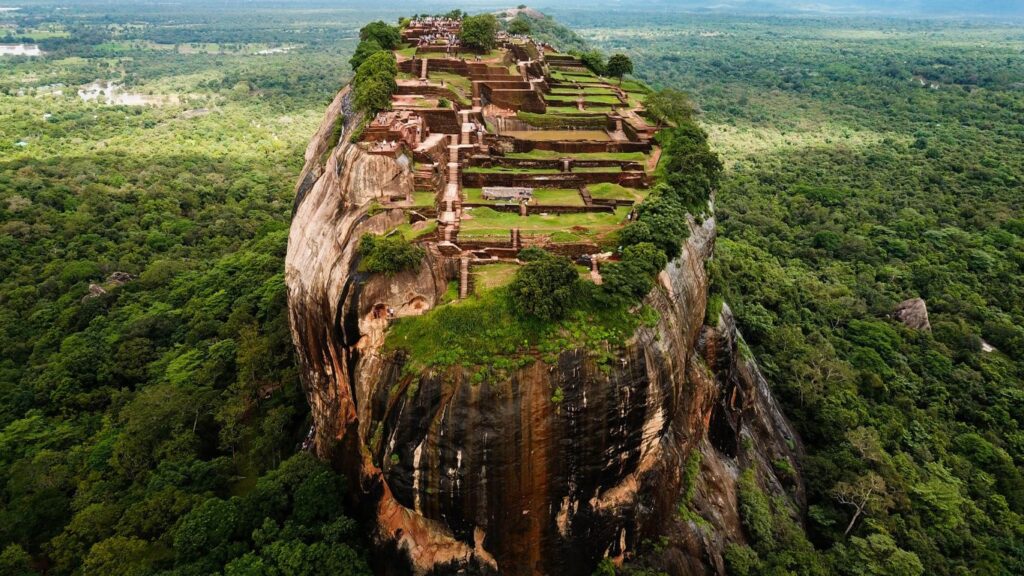
Architecture is an engineering marvel that still fascinates scholars and tourists alike. The fortress was built on top of a massive rock that rises over 200 meters (660 feet) above the surrounding jungle. The rock was transformed into a palace complex with a sophisticated network of water gardens, pools, and fountains.
The fortress was designed in a way that provided both defense and comfort to its inhabitants. The palace was surrounded by a moat, ramparts, and gates, making it almost impregnable. Inside, the palace complex was designed to provide maximum comfort to the king and his court.
The palace complex was organized around a central courtyard, which was surrounded by residential and administrative buildings. The king’s throne was located at the top of the rock, overlooking the surrounding landscape. The throne was accessible via a series of steep steps and walkways that provided breathtaking views of the surrounding jungle.
The palace complex also included several gardens and water features. The boulder garden, located at the base of the rock, was a collection of massive boulders that were left in place to create a natural garden. The water garden, located on the north side of the rock, included a series of pools, fountains, and water channels that provided both beauty and functionality to the palace complex.
The architecture of Sigiriya was not only functional but also highly artistic. The palace complex was decorated with a range of ornate carvings, sculptures, and frescoes. The frescoes, in particular, are a stunning example of ancient Sri Lankan art. They are believed to have been created by highly skilled artists who were brought to Sigiriya from all over Sri Lanka.
City Planning
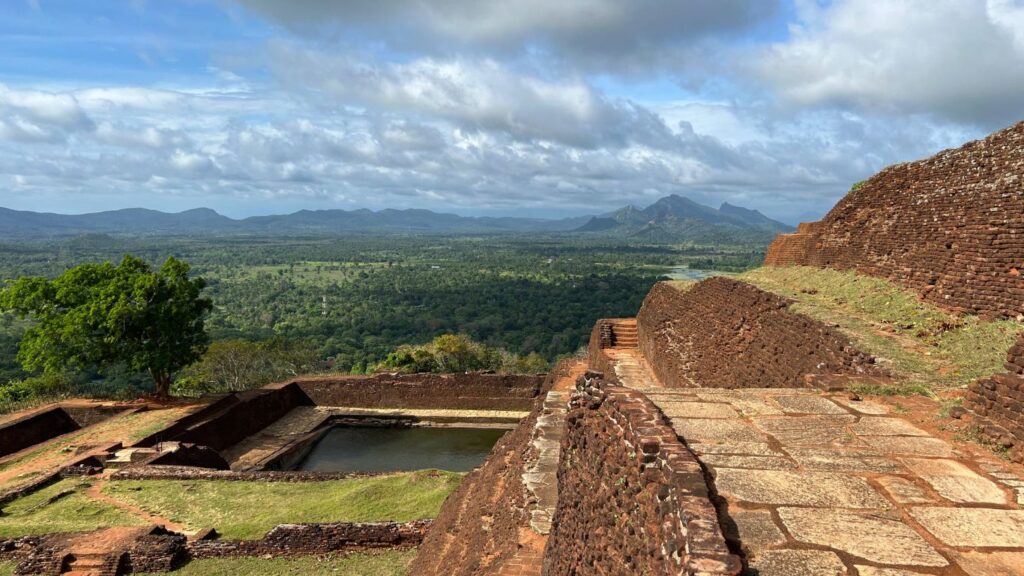
Sigiriya is not just a fortress, but also a remarkable example of ancient city planning. The fortress is surrounded by a series of moats and walls, with the main entrance located on the western side. The city was divided into different sections, with the palace complex at the very top of the rock.
Water Gardens

One of the most impressive features is its water gardens. The gardens are made up of a series of fountains, pools, and canals that are designed to create a sense of tranquility and serenity. The water gardens were fed by an elaborate system of underground pipes and aqueducts, which brought water from nearby rivers and lakes.
Frescoes
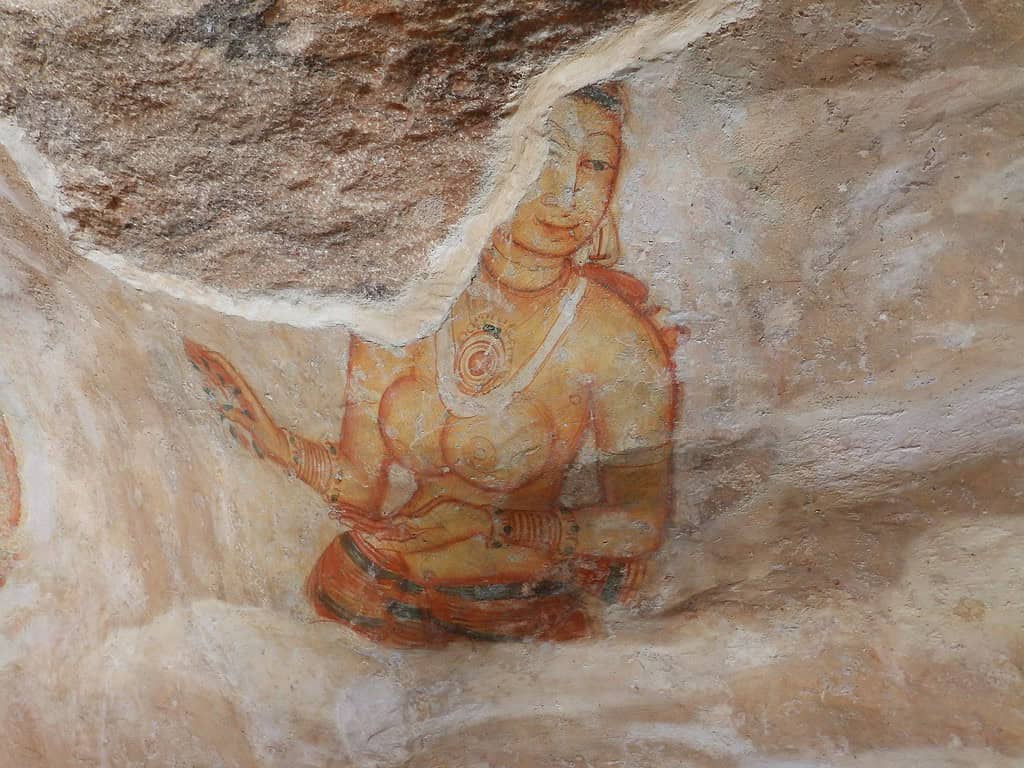
One of the most stunning features of Sigiriya is the collection of frescoes located on a rock face about halfway up the fortress. The frescoes depict female figures in various poses and outfits and are believed to be either celestial nymphs or members of the king’s harem.
The frescoes were painted using vibrant colors and intricate designs, which have survived the test of time remarkably well. They are considered to be some of the finest examples of ancient Sri Lankan art.
Despite their beauty, the frescoes have been the subject of controversy over the years. Some scholars have argued that the female figures depicted in the frescoes are too sexualized and objectified. Others argue that they represent a celebration of feminine beauty and power.
Regardless of their meaning, the frescoes are an undeniable masterpiece of ancient art. Visitors to Sigiriya can still see the frescoes today, although access to them is limited to protect their delicate condition.
Mirror Wall

Another remarkable feature of Sigiriya is the Mirror Wall. The wall is a highly polished surface that was used by visitors to the fortress to write poetry and graffiti. The wall still bears inscriptions in several languages, dating back as far as the 8th century.
The Mirror Wall was originally coated with a special plaster made from a mixture of lime, egg whites, and honey. The plaster was then polished to create a smooth and reflective surface, which visitors could use to admire themselves or write messages.
Over time, the Mirror Wall became a popular spot for visitors to leave their mark. The wall is covered in inscriptions, ranging from simple messages of admiration to elaborate poems and stories.
Today, the Mirror Wall is a fascinating window into the past. It provides a glimpse into the lives and thoughts of the people who visited Sigiriya over the centuries and is a testament to the enduring power of human expression.
Paintings

The Rock Paintings are a series of ancient paintings that are believed to be over 1,500 years old. The paintings depict a variety of subjects, including celestial nymphs, animals, and other mythological figures. The paintings are located on a sheltered rock face about halfway up the fortress and can be accessed via a spiral staircase.
Boulder Garden
The Boulder Garden is a large area at the base of Sigiriya that is filled with large boulders and rocks. The garden was designed to be a natural defense against invaders, as it would have been difficult for an army to navigate through the maze of rocks. The Boulder Garden also contains a series of caves and natural pools, which would have been used for bathing and relaxation.
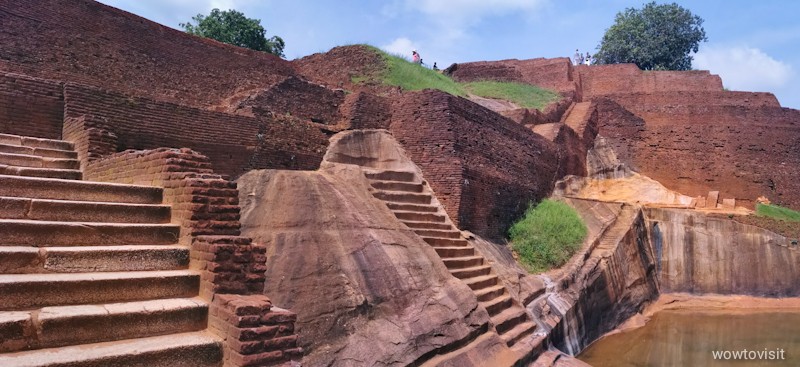
Terraced Yard
One of the most impressive features is architecture is the terraced yard, which is located at the base of the rock. The terraced yard is a series of stepped terraces that were built to support the palace complex above.
The terraced yard is divided into several levels, each of which has a unique function. The lower levels were used for farming and agricultural activities, while the upper levels were used for administrative and residential purposes.
The terraced yard was also designed to be aesthetically pleasing. The terraces were planted with a variety of trees, shrubs, and flowers, which provided shade and beauty to the palace complex above. The terraced yard also included a series of pools and fountains, which added to its beauty and functionality.
The terraced yard is a remarkable example of ancient engineering and design. The terraces were built using a combination of natural and artificial materials, including rock, soil, and bricks. The terraces were designed to provide stability to the palace complex above, while also providing a range of functional and aesthetic benefits.
Today, visitors to Sigiriya can still see the terraced yard and marvel at its impressive engineering and design. The terraced yard is a reminder of the ancient Sri Lankan kingdom’s remarkable achievements in architecture, engineering, and design.
Why Visit?
Sigiriya is more than just a historical site – it is an awe-inspiring testament to the ingenuity and creativity of the ancient Sri Lankan people. The rock fortress is a true marvel of engineering, featuring an intricate network of water gardens, fountains, and canals that were used to irrigate the surrounding lands.
In addition to its stunning architecture and engineering, Sigiriya is also an important spiritual site for Buddhists. The site is home to several ancient Buddhist temples and monasteries, including the Pidurangala Vihara, which is said to have been the residence of the monks who served at Sigiriya
What to see
The most famous feature of Sigiriya is the fortress itself, which is a marvel of ancient engineering. The fortress consists of a series of terraces that are built into the rock face, with elaborate water gardens, fountains, and frescoes decorating the walls. At the very top of the fortress, you’ll find the ruins of Kasyapa’s palace, which offer breathtaking views of the surrounding jungle.
Other notable features of Sigiriya include the Mirror Wall, a polished wall that was used to reflect the frescoes, and the Sigiriya Rock Paintings, a series of ancient paintings that depict celestial nymphs and other mythological figures.
How to get to There
Sigiriya is located in the north-central part of Sri Lanka, about 180 km from Colombo. The easiest way to get there is by car or bus, which takes about 4-5 hours from Colombo. You can also take a train to the nearby town of Habarana and then hire a tuk-tuk or taxi to take you to Sigiriya.
Tips for visiting
If you’re planning a trip to Sigiriya, there are a few things you should keep in mind:
- Wear comfortable shoes, as you’ll be climbing a lot of stairs to get to the top of the fortress.
- Bring sunscreen and a hat, as there’s not much shade on the rock.
- Plan to visit early in the morning or late in the afternoon to avoid the crowds and the heat.
- Hire a guide to learn more about the history and architecture of the fortress.
Final Thoughts
Sigiriya is a true masterpiece of ancient architecture, engineering, and design. Its remarkable features, including the terraced yard, the water garden, the frescoes, and the mirror wall, are a testament to the creativity and ingenuity of its builders. Visiting Sigiriya is a truly unforgettable experience that offers a glimpse into the power and influence of the ancient Sri Lankan kingdom.
Best Hotels Near To Sigiriya
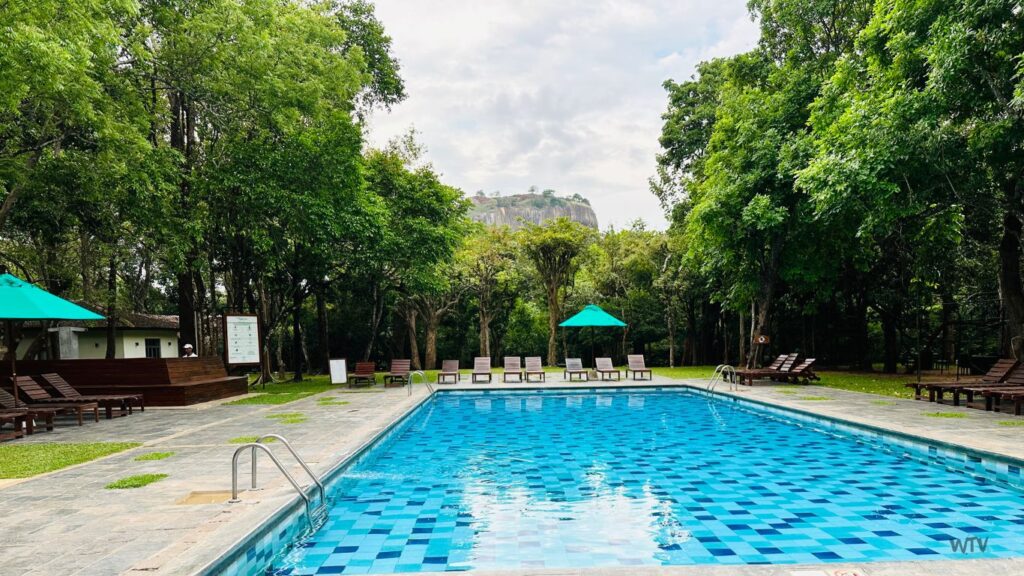
| Hotel Name | Location | Details |
|---|---|---|
| Hotel Sigiriya | Sigiriya | Offers comfortable rooms and a large pool, just a short drive away from Sigiriya Rock. |
| Sigiriya Village | Sigiriya | A charming eco-friendly retreat with cottages amidst lush gardens, close to the ancient site. |
| Jetwing Vil Uyana | Sigiriya | Unique eco-luxury hotel featuring private dwellings on stilts, surrounded by wetlands and nature. |
| Aliya Resort | Sigiriya | Set against the backdrop of Sigiriya Rock, Aliya Resort offers luxury rooms and stunning views. |
| Water Garden | Sigiriya | Located near Dambulla, it offers luxurious villas with private plunge pools and serene gardens. |
| Amaya Lake | Dambulla | A tranquil resort nestled by Kandalama Lake, providing a peaceful escape with scenic surroundings. |
Find Sigiriya’s contact details below
Frequently Asked Questions (FAQ) About Sigiriya
What hotels are near Sigiriya?

1Hotel sigiriya
2,Sigiriya village
3,Jetwing Vil Uyana
4,Aliya Resort
5,Water garden
Restaurants near sigiriya
Nalin’s village food and hand-woven
Sigiriya new thawulla restaurant
Cashew nut restaurant Sigiriya
Wijesiri family restaurant
Shenadi restaurant
What is Sigiriya?
Sigiriya is an ancient rock fortress located in the central Matale District of Sri Lanka. It was built in the 5th century by King Kasyapa as a new capital in the region.
What is the Mirror Wall?
The Mirror Wall is a highly polished surface that was used by visitors to the fortress to write poetry and graffiti. The wall still bears inscriptions in several languages, dating back as far as the 8th century.
What are the frescoes?
The frescoes are stunning paintings located on a rock face about halfway up the fortress. They depict female figures in various poses and outfits and are believed to be either celestial nymphs or members of the king’s harem.
What is the Water Garden?
The Water Garden is a series of landscaped pools, fountains, and canals that were used for both practical and aesthetic purposes. It was designed to provide a source of water for the city’s inhabitants and to create a beautiful and tranquil environment for the king and his guests.
What is the Boulder Garden?
The Boulder Garden is a series of natural caves and rock formations that were incorporated into the fortress’s design. It was used as a defense mechanism, as it made it difficult for attackers to scale the walls of the fortress.
What is the best time of year to visit Sigiriya?
The best time to visit Sigiriya is between November and April when the weather is dry and sunny.
How much does it cost to visit Sigiriya?
The entrance fee to Sigiriya is $30 for foreigners and $15 for SAARC nationals. Children under 12 can enter for free.
How long does it take to climb Sigiriya?
The climb to the summit of Sigiriya takes approximately two hours.
Is Sigiriya accessible to people with disabilities?
Unfortunately, Sigiriya is not accessible to people with disabilities, as the climb to the summit involves navigating steep staircases and narrow passages.
Are there any accommodations near Sigiriya?
Yes, there are several hotels and guesthouses located near Sigiriya, ranging from budget-friendly options to luxury resorts.
